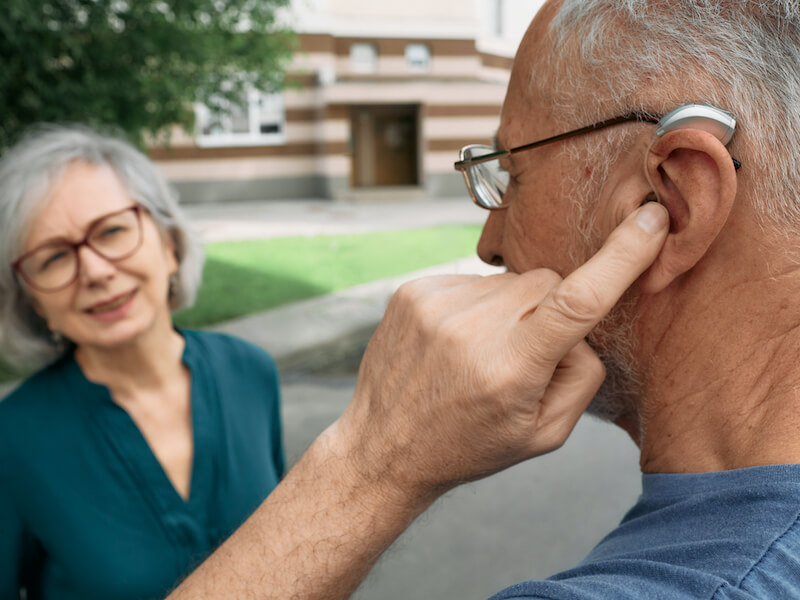
Have you ever had your internet cut right as you’re getting to the best part of your favorite Netflix movie? You sit there and watch that spinning circle instead of learning about who won that cooking competition. All you can do is wait around for it to come back. Is it your internet provider, modem, router, or maybe it will just come back on its own? It’s not a very good feeling.
Technology can be tremendously frustrating when it doesn’t work properly. The same is definitely true of your hearing aids. Most of the time, your hearing aids will give you the means to stay connected to loved ones, have discussions with co-workers, and keep up with your neighbors.
But your symptoms of hearing loss can suddenly become extremely frustrating when your hearing aids quit working. You’ve been let down by the technology you depend on. How do hearing aids just stop working? So how do you deal with that? Well, there are three common ways that hearing aids can fail, here’s how you can begin to identify and troubleshoot those issues.
Three common issues with hearing aids (and some possible solutions)
Even though hearing aids are sophisticated technology, individuals may encounter three common issues with them. Here’s what could be causing those issues (and what you can do to correct them).
Whistling and feedback
Perhaps you suddenly start to hear an awful high-pitched whistling while you’re attempting to have a chat with a friend or family member. Or perhaps you notice some feedback. You begin to think, “this is weird, what’s up with this whistling”?
Here are three potential issues that could be causing this feedback and whistling:
- For people who wear behind-the-ear hearing aids, the tubing that connects your earmold with your hearing aid may have become compromised. Try to inspect this tubing as closely as possible and make sure nothing is loose and the tube doesn’t appear damaged.
- Earwax accumulation in your ear canal can undermine how your hearing aid functions. This is a relatively common one. That includes causing your hearing aids to whistle or feedback. If possible, you can attempt to clean some earwax out of your ear or consult with us about the best way to do that (do not use a cotton swab).
- Your hearing aids may not be seated in your ears properly. Try taking them out and putting them back in. If the fit isn’t right you might need to come see us so we can help you get a better fit.
If these issues are not easily resolvable, it’s worth talking to us about correcting the fit or sending your device in for maintenance (depending on what we determine the root cause of that whistling or feedback might be).
No sound coming from your hearing aids
Your hearing aids should make, well, sound. That’s what they’re created to do! Something has definitely gone wrong if you don’t hear any sound coming out of your hearing aid. So what could be the cause when hearing aids work but no sound comes through? Here are several things to look for:
- Your settings: If you have them, flip through your custom settings. It’s feasible your hearing devices are on the wrong custom setting (so perhaps your hearing aids think you’re in a concert hall instead of at the kitchen table). This balance could throw off the sound you’re hearing.
- Batteries: If you have rechargeable batteries, make sure that they’re completely charged. And even rechargeable batteries should be swapped out once in a while.
- Power: Look, we’ve all forgotten to turn on the hearing aid before. Be sure that’s not the issue. Then you can eliminate that as possible problems.
- Earwax buildup: Here we go again with the earwax! Examine your device for signs of earwax on the microphone or speakers or any sensitive parts. Keep your device very clean.
We are here for you if these measures don’t clear up your issues. We’ll be able to help you determine the next steps, and whether maintenance, repair, or replacement is required.
When you have your hearing aids in, you feel pain in your ears
Maybe your hearing aids are fine functionally but they hurt when you put them in. And you’re likely thinking: why do my ears hurt when I wear my hearing aids? This type of discomfort isn’t exactly conducive to using your hearing aids on a day-to-day basis. So, what could be causing it?
- Time: Usually, it just takes some time to get used to your hearing aids. How long it takes will depend on the individual. When you first get your hearing aids, we can help you get a realistic idea of the adjustment period you can expect. If uncomfortable ears persist, talk to us about that as well!
- Fit: The most obvious issue can be the fit. Naturally, when the fit is nice and snug, your hearing aids will work best. So when your hearing aids aren’t fitting quite right, there can be some pain. Some hearing aid models can be fit to the specific shape of your ears. Over the long haul, you will have fewer issues if you have a tight fit. We will be able to help you get the best possible fit from your devices.
Take your new hearing aid out for a test ride
Before you commit to a set of hearing aids, it’s a smart plan to try them out for a while. In most cases we’ll let you test out a pair of devices before you determine that’s the pair for you.
Selecting the right hearing aids, adjusting them to fit your requirements, and helping with any ongoing issues you might have, are all things we will assist with. We will be your resource for any assistance you need.
And that’s a lot more than you will get with an over-the-counter hearing aid!